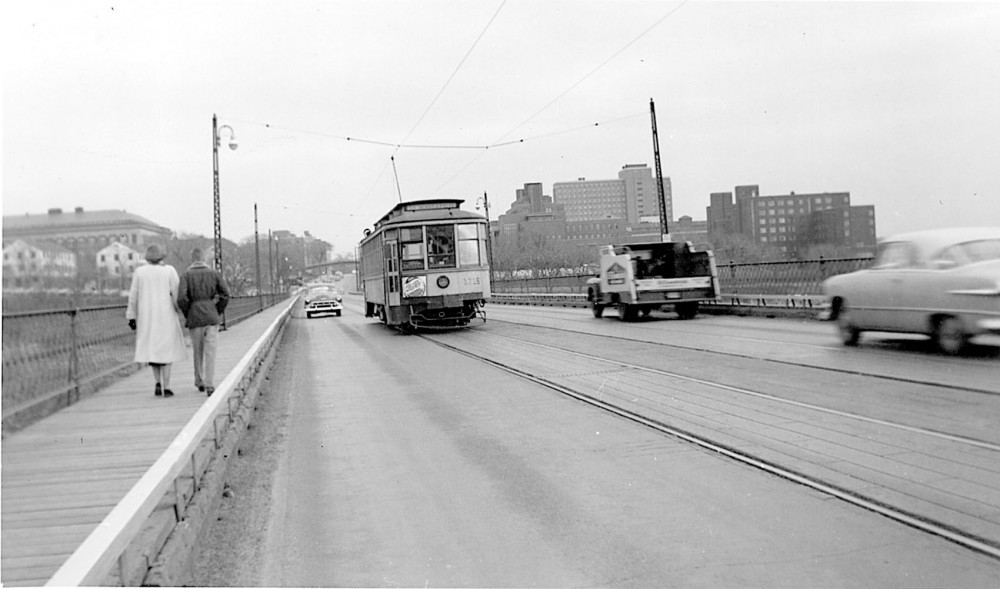In the first half of the 20th century, streetcars dominated the Minneapolis transportation landscape.
But amid decreased ridership and government policy change, buses and cars phased out streetcars in the early 1950s.
After a decades-long absence, modern streetcars are closer to reality than ever before in Minneapolis, with proponents touting they’ll boost development for a modern city.
In May, the Legislature gave the city of Minneapolis authority to collect and use property tax revenue for a Nicollet Avenue streetcar line, making their return more promising than in years past.
“This makes [the Nicollet Avenue project] a lot more optimistic,” said city councilwoman Diane Hofstede. “The funding is always questionable.”
If the City Council approves the project after a public hearing June 18, tax collection for the Nicollet Avenue line could begin.
Then and now
University of Minnesota students could ride from Folwell Hall to the St. Paul campus on streetcars in the early 1900s.
Many modern bus and light-rail routes follow streetcar lines that disappeared when government funding moved from private transit companies to road construction projects.
“Progress and modernism said ‘no streetcars,’” said Aaron Isaacs, a streetcar historian and former Metro Transit planner, adding that the 1923 transit system had twice the ridership of modern Minneapolis public transit.
With decreased government help, all the costs of maintaining the tracks, overhead wires and power systems for about 400 miles of track fell to the privately owned streetcar companies — leading to the demise of streetcars.
But today, the government can start funding streetcars again. The omnibus tax bill allows the city to use property tax revenue in the areas around the proposed streetcar project for the line’s construction.
This financing method could generate $5 to $6 million per year in local funding, said Peter Wagenius, Mayor R.T. Rybak’s policy director. The entire 3.5-mile project would cost an estimated $200 million, he said.
Wagenius said he’s seen an “overwhelmingly positive response” to the project so far.
“It’s a superior rider experience … low floor, wide doors, smooth ride, no fumes,” he said. “Even if the service is identical [to bus], more people will ride the rail.”
The modern streetcar
Although Minneapolis has a rich history with streetcars, city leaders want to emphasize this would be a modern transit system.
“We are not doing this out of any sense of nostalgia,” Wagenius said.
The permanence of rail transit can spur development better than buses, which can change routes easily.
“Buses will carry the load,” Isaacs said, “but they won’t have that surrounding impact.”
The concept is familiar in the Twin Cities. Along the Hiawatha light-rail line, some renters have flocked to housing near light-rail stops.
Renae Bulau, property manager for The Reflections, a condo near Bloomington Central Station, said proximity to the light-rail stop is a “No. 1 selling point.”
“A major part of why people buy here is because of the light rail,” she said, adding that many people live there to have an easier commute to downtown Minneapolis.
Although housing near rail stops can be more expensive, Bulau said being near the stop “basically pays for itself” because residents don’t have commuting and parking expenses.
Development tends to be clustered around light-rail stops since they have more space between them. But with streetcars, Wagenius said development tends to extend the entire length of the line because stops occur every two to three blocks.
Portland’s ‘gold standard’
For some city leaders, Portland, Ore., is the “gold standard” for modern streetcars.
Portland has served as a model for many cities around the country that want to follow its success. The city’s first line opened in 2001 and was later extended to two lines totaling nearly 15 miles.
By 2008, there was $3.5 billion in development along the line, said Julie Gustafson, a spokeswoman for Portland Streetcar.
Over time, Portland’s streetcar network has expanded to two lines and has experienced an annual ridership of more than 3.5 million passengers in each of the last five years.
The first streetcar line reached out to one of Portland’s less-developed areas, which opponents of the project said was risky. But after the line opened, Gustafson said the area got its first new commercial building in more than a decade.
“Even in a rough economy, the developers continue because of rail,” she said.
Although many look to Portland as an indicator for Minneapolis’ success with street cars, others are more cautious.
“You need to be careful about how many direct comparisons you make from it,” said Michael Mechtenberg, project manager for the Midtown Corridor.
Potential for progress
The Midtown Corridor is in the analysis stage, where streetcars will be compared with “enhanced busing” to see what form of transit would best serve the area.
Mechtenberg said area residents are split between supporting streetcars and buses.
Some are in favor of the streetcar, he said, while others want expanded bus service to bring more people to Lake Street businesses. The proposed streetcar line would have fewer stops in the area than the bus route.
“There are definitely two different camps,” Mechtenberg said. “It is a challenge to get good information about the differences between streetcar and enhanced bus.”
He expects more detailed information on the corridor to become available in the fall with a recommendation by February 2014.
Minneapolis officials will continue planning for now, but Wagenius said the main complaint he’s heard is that the project wouldn’t expand fast enough.
“Transit projects take a long time to build — rail transit projects in particular,” he said. “People wish we could go faster.”

















